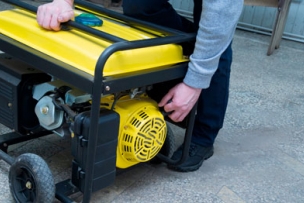From hurricanes to tornadoes to volcanoes—be prepared for anything.
All natural emergencies put our safety at risk, yet no two are the same. Regional disasters like tsunamis threaten thousands of lives and can require international aid. Others such as extreme heat are more widespread, but harmful effects are avoidable with a few simple steps.
However different, every emergency requires preparation. “Make a plan, be informed and get a kit,” says Reba Griffith of the Division of Environmental Hazards and Health Effects at the Centers for Disease Control and Prevention (CDC). “We provide step-by-step actions you can take beforehand to protect yourself, your employees and your loved ones.”
Griffith explains that since no two disasters are alike, every response plan and kit should be specific to each potential emergency. Here are 11 emergency situations recognized by the CDC, and expert advice on how to prepare.
“Make a plan, be informed and get a kit.”
Extreme Heat
Heat-related deaths and illnesses can be prevented. Stay in shaded or air-conditioned areas, and avoid strenuous work during the middle hours of the day. Outside workers should wear loose, light clothing and SPF 15 or higher (look for UVA/UVB protection) and drink two to four glasses of cold water per hour.
Winter Weather
Prepare your home or workplace: Insulate walls and attics, caulk stoop doors, install storm windows, repair leaks and cut overhanging branches. Have your chimney and flue inspected each year, and check the batteries of smoke and carbon monoxide detectors each month. Watch local media and keep a supply of food and water.
Floods
Contact county officials to locate areas prone to flooding. Know your community’s evacuation plan and the location of emergency shelters (note: some shelters don’t take pets—check ahead). A flood emergency kit should include rubber boots, waterproof gloves, insect repellent with DEET and personal hygiene items such as disposable cloths and baby wipes.
Wildfires
Regularly clean roofs and gutters, maintaining a perimeter of approximately 30 feet away from brush, newspapers, wood or leaves. Have a connected garden hose long enough to reach any area of the house. Fill cans, tubs and large containers with water. Review homeowner insurance.
Lightning
Avoid electrical equipment, windows, concrete, water and trees. Seek shelter in homes, offices and hardtop cars with closed windows. If caught outside, groups of people should separate, in case lightning strikes the ground.
Hurricanes
Have an evacuation plan, 5 gallons of fresh water per person and a full tank of gas. Cover windows and bring lawn furniture inside.
Landslides
Some 25 to 50 Americans die every year in landslides (earth, rock and debris moving down a slope) and mudslides (landslides that form channels). Both pose travel, electrical and sewage hazards. Know the local evacuation plan, or propose one.
Earthquakes
Store food, water and fire extinguishers. Turn off utilities and practice finding “safe spots,” areas away from windows, bookcases, cabinets or interior walls. Seek shelter under desks and practice the best way to “duck and cover.”
Tornadoes
Know how to quickly turn off your home’s gas, electricity and water. Have a supply of drinking water and don’t stay in any rooms with windows. Keep a list of phone numbers and any insurance information. Store important documents in a safe that protects against fire and water damage.
Tsunamis
The danger lies in the aftermath. Contaminated food and water can bring about diarrhea, cholera and hepatitis E. If you live in an area where tsunamis are a possibility, always keep a supply of nonperishable food and water as well as waterproof boots and gloves. Plan an evacuation route.
Volcanoes
Lava and rockslides don’t pose as great a risk as the gas and ash an eruption can release into the atmosphere. First-aid kits should include breathing and eye protection, and be sure to have a battery-powered radio and sturdy sneakers.
For more on planning for environmental or other emergencies, visit the CDC’s Environmental Health Media Toolkits and also talk to a specialist at MSC Industrial Supply.
What types of weather emergencies are most common in your area? How do you prepare?


Talk to Us!
Well I’m starved, who wants jambalaya?
9Leave a reply
Your email address will not be published. Required fields are marked *